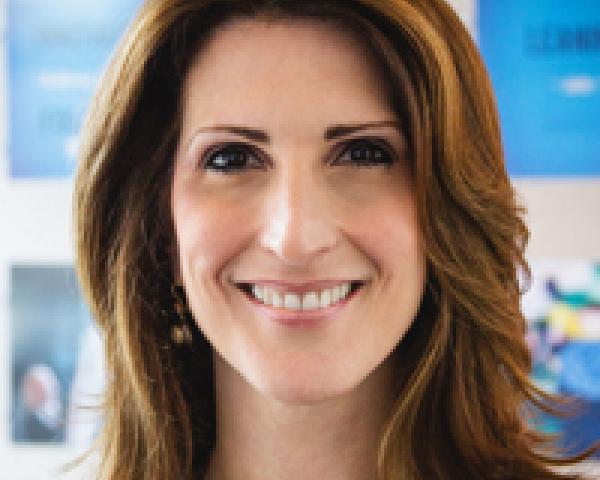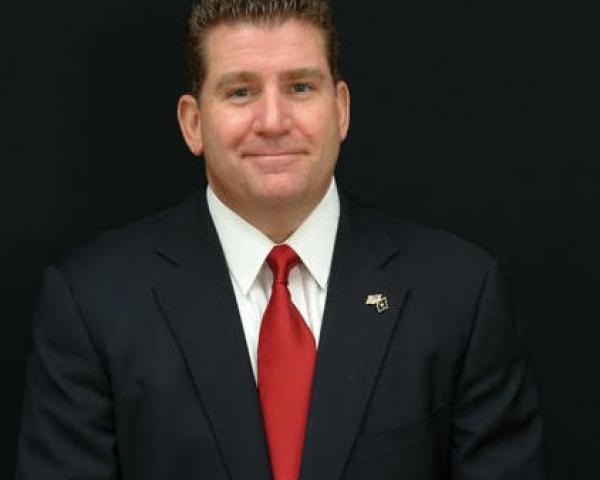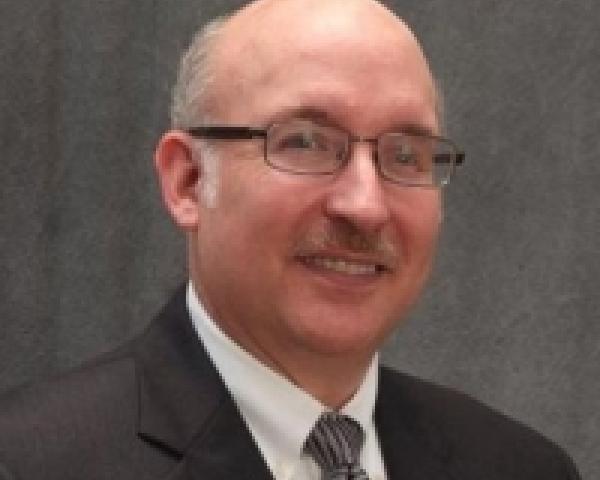Machine Learning to the Rescue on Cyber?
Machines can assemble detailed profiles of how employees, partners and third-party vendors access and use data, and flag anomalies.

Machines can assemble detailed profiles of how employees, partners and third-party vendors access and use data, and flag anomalies.

Get Involved
Our authors are what set Insurance Thought Leadership apart.
|
Partner with us
We’d love to talk to you about how we can improve your marketing ROI.
|

Byron Acohido is a business journalist who has been writing about cybersecurity and privacy since 2004, and currently blogs at LastWatchdog.com.
Germany leads the race, with the U.S. right behind. Japan, Sweden and France are making good strides, while Italy, Korea, England and China trail.


Get Involved
Our authors are what set Insurance Thought Leadership apart.
|
Partner with us
We’d love to talk to you about how we can improve your marketing ROI.
|

Rebecca Hill works as a blogger and outreach co-ordinator. She is a graduate from York University, Ontario and loves all thing tech, science, sports and DIY.
Having these five characteristics can protect certain advisers from the threat of having their jobs eaten by technology.

After decades of experience working with and getting to know thousands of people whose job it is to give advice around insurance, investments and real estate, I’ve observed a few traits that I personally believe are critical to long-term relevance. Frankly, I also believe they will make certain advisers immune to the threat of their job being eaten by technology.
There is quite a bit of concern over robo advice threatening these livelihoods. We must consider that the underlying reason is a trust problem with those who make their living giving advice while at the same time selling products for a commission. But the underlying cause of mistrust may actually be the absence of one or more of the following five characteristics of advisers that matter more in the trust equation: 1. They seek to help their community first, then benefit from it later. There’s a not-so-subtle distinction between people who join a community group because they want to network for business purposes and people who join because they are interested in helping advance the mission of that group. While oftentimes both motivations can exist at the same time, the real test would be to ask those people if they would have either joined or stayed with that group even if their prospecting need were not there. While those inside the business may not see the distinction, others can see it a mile away. Trust erodes when intentions are not clear. See also: 3 Major Areas of Opportunity 2. They see work and life as inextricably intertwined and are in love with both. Advisers who will stay relevant, who are "nondisruptable," are people who always seems to be there for what’s most important, whether the market is crashing, an individual lost his/her job or someone’s kid or grandkid is in a little league game. From the outside, it may look like those advisers are either always working or never working. And the answer would be: yes, they are. 3. They keep score based on outcome versus income. While earnings and sales numbers are important for a successful practice, putting numbers on the board is not what makes nondisruptable advisers sleep well at night. Rather, they create metrics of their own, consciously or unconsciously, counting things like how many people they have advised, how many thank you letters they receive, how many people they’ve helped employ or even how many hugs they have ever received from their clients. Counting these means they never need to count sheep. 4. They are described similarly by families, friends, clients and communities. Nondisruptable advisers show one face to everyone. While they may have many interests, they bring their best to every situation and see the role of adviser as a calling and not just a career. Anyone can give advice from his/her own point of view. However, it takes care, skill and emotional intelligence to deliver advice that’s in someone else’s best interests. The question remains as to whether these traits can be taught. Sure, someone could write a book or perhaps create a coaching program around them, but I’m not sure either would help. I suspect that people are either raised in such a way that these traits develop or they experience something dramatic that shifts their perspective quickly and forever changes their attitude. 5. They leave a mark that lives past them. While this trait certainly isn’t realized until the adviser passes away or can no longer do his/her job, that individual’s ability to make an impact is unmistakable and therefore nondisruptable. You just know it when you see it. See also: Insurance Coverage Porn This article was inspired by and is dedicated to my long-time friend Jane Lopp from Kalispell, Montana. Jane and I met at Prudential, where she built an impressive practice with an outstanding team, a supportive family and a community that felt her presence in countless ways. Nothing stopped Jane, including being confined to a wheelchair due to a muscle disease. Jane’s life was taken after a car accident on April 21 of this year, and, as her husband, Bob, noted, she was full of life and at the peak of her career. If you know someone like Jane who embodies these five traits, please give them a hug. They deserve it.
Get Involved
Our authors are what set Insurance Thought Leadership apart.
|
Partner with us
We’d love to talk to you about how we can improve your marketing ROI.
|

Maria Ferrante-Schepis is the managing principal of insurance and financial services innovation at Maddock Douglas.
Cybersecurity, like terrorism or tornados, is about risk management. The sales professional must educate prospects about the risk.

“I believe the Chinese concluded from the Desert Storm experience that their counter approach had to be to challenge America's control of the battle space by building capabilities to knock out our satellites and invading our cyber networks. In the name of the defense of China in this new world, the Chinese feel they have to remove that advantage of the U.S. in the event of a war”. – Admiral Mike McConnell (ret.), former Director NSA, and Director National IntelligenceNot to be left out, the Russian military also accelerated its cyber capabilities (post Gulf War I) as well. In fact, many “retired” military cyber warriors established the early Russian cyber criminal syndicates, and promoted global cyber crime as a business model. As a result cyber crime evolved, and Cyber Crime as a Service eventually exploded. It is a well-known operational fact that you only exist as a significant Russian cybercriminal if you abide by three hard and fast rules:
“The economic security of the West is in jeopardy. Civilizing cyberspace must become a national priority.”Research firm, Cyber Ventures (not to be confused with Strategic Cyber Ventures), produced a report that predicts that cyber crime worldwide will grow from $3 Trillion in 2016 to over $6 TRILLION dollars annually by 2021! As a comparison, the entire Gross Domestic Product (GDP) for the U.S.A. was $14 Trillion in 2016. Cyber crime today is professional, organized, sophisticated, and most importantly “relentless”. These are not personal attacks. If you have any digital footprint you are a target, period. The entire Internet can be scanned for open ports within a few days. When it comes to security, the old adage “Offense informs Defense” is appropriate when protecting your specific business operation. A former client of mine, John Watters, CEO of iSIGHT PARTNERS, (now FireEye), used an example: “A burglar and an assassin can use the same tools and tradecraft to gain entry to a location, but the intent, once inside, is very different. One wants your property, the other wants to kill your family. Prepare yourself accordingly”. Another business challenge moving forward is that the risk of cyber attack is growing. This is a dual-edged sword in many regards. The Internet of Things and the Industrial Internet of Things (IIoT) opens a much wider attack surface of many more devices. However, the operational efficiencies and human productivity advances cannot be denied and will move forward. This situation creates a new reality; essentially cyber threats are morphing from a virtual threat into a physical danger. Matt Rosenquist, Cyber Security Strategist, Intel Security Group, explained in his 2017 ISC WEST Keynote address that the same controls that provide auto assist to parallel park your vehicle can be hacked to force a car (or hundreds of cars) to accelerate to high speeds and turn abruptly, causing fatal accidents. Imagine for a moment what that hack does to that specific automobile manufacturers brand reputation? Would the corporation even hope to survive? Moving forward SECURITY, followed closely by privacy protections, will be at the top of all buying requirements to win business. The bottom line is that cybersecurity, like terrorism or tornados, is about risk management. This is a discussion that owners, management, and boards of directors know well. It is the responsibility of the sales professional to educate prospects to the sophisticated level of cyber risk that exists today and into the future. This is why understanding and explaining the evolving cyber crime business model is so important as an initial discussion. See also: Now Is the Time for Cyber to Take Off In 2017 I have had the “Cyber 101 Discussion” with sales leadership and executives from many companies and industries:
Get Involved
Our authors are what set Insurance Thought Leadership apart.
|
Partner with us
We’d love to talk to you about how we can improve your marketing ROI.
|

Dan Dunkel is a sales and business development consultant, author and security columnist. He combines 22 years of successful domestic and international sales experience in high technology with a decade-long "security convergence" consulting practice.
Insurers that already possess licenses for different insurance segments must leapfrog in offering converged insurance products.

Get Involved
Our authors are what set Insurance Thought Leadership apart.
|
Partner with us
We’d love to talk to you about how we can improve your marketing ROI.
|

Girish Joshi is an insurance industry visionary and a business leader. Over the past 18 years, he has been advising insurance clients in North America, Europe and Asia Pacific across business strategy, consulting, business and IT transformations, technology adoption and related areas.
The power shifts to the individual, and, because he is under no obligation to share what he knows, now the carrier faces a disadvantage.

Get Involved
Our authors are what set Insurance Thought Leadership apart.
|
Partner with us
We’d love to talk to you about how we can improve your marketing ROI.
|

Amy Radin is a transformation strategist, a scholar-practitioner at Columbia University and an executive adviser.
She partners with senior executives to navigate complex organizational transformations, bringing fresh perspectives shaped by decades of experience across regulated industries and emerging technology landscapes. As a strategic adviser, keynote speaker and workshop facilitator, she helps leaders translate ambitious visions into tangible results that align with evolving stakeholder expectations.
At Columbia University's School of Professional Studies, Radin serves as a scholar-practitioner, where she designed and teaches strategic advocacy in the MS Technology Management program. This role exemplifies her commitment to bridging academic insights with practical business applications, particularly crucial as organizations navigate the complexities of Industry 5.0.
Her approach challenges traditional change management paradigms, introducing frameworks that embrace the realities of today's business environment – from AI and advanced analytics to shifting workforce dynamics. Her methodology, refined through extensive corporate leadership experience, enables executives to build the capabilities needed to drive sustainable transformation in highly regulated environments.
As a member of the Fast Company Executive Board and author of the award-winning book, "The Change Maker's Playbook: How to Seek, Seed and Scale Innovation in Any Company," Radin regularly shares insights that help leaders reimagine their approach to organizational change. Her thought leadership draws from both her scholarly work and hands-on experience implementing transformative initiatives in complex business environments.
Previously, she held senior roles at American Express, served as chief digital officer and one of the corporate world’s first chief innovation officers at Citi and was chief marketing officer at AXA (now Equitable) in the U.S.
Radin holds degrees from Wesleyan University and the Wharton School.
To explore collaboration opportunities or learn more about her work, visit her website or connect with her on LinkedIn.
Promising campaigns model hope, inspire, practice safe messaging and call us to action. They are “baked in” to a company’s culture.

 Photo by Joits[/caption]
Photo by Joits[/caption]
Get Involved
Our authors are what set Insurance Thought Leadership apart.
|
Partner with us
We’d love to talk to you about how we can improve your marketing ROI.
|

Sally Spencer-Thomas is a clinical psychologist, inspirational international speaker and impact entrepreneur. Dr. Spencer-Thomas was moved to work in suicide prevention after her younger brother, a Denver entrepreneur, died of suicide after a battle with bipolar condition.
Today, continuous innovation is as important as the traditional disciplines of underwriting, financial management, marketing and service.

Get Involved
Our authors are what set Insurance Thought Leadership apart.
|
Partner with us
We’d love to talk to you about how we can improve your marketing ROI.
|

Mike de Waal is senior vice president of sales at Majesco.
"We’re not the 'no' team—we’re not here to tell our colleagues how not to do things. We’re trying to enable innovation."

Get Involved
Our authors are what set Insurance Thought Leadership apart.
|
Partner with us
We’d love to talk to you about how we can improve your marketing ROI.
|
Everyone wants to close a workers' comp claim quickly. That can save money -- but works against attempts to head off fraud.

If you are involved with workers' comp claims in any way, you undoubtedly have a stable of great stories to tell. Maybe you've seen the guy who claims he can barely walk yet finds the strength to run in a marathon. Or maybe you’ve seen the claimant who says he has never had any prior workers' compensation claims yet knows the workers' comp procedures better than most attorneys.
Watch Out for Those Sprinklers
Sheyla White, an office worker from Florida, alleged a sprinkler hit her in the head in October 2015. Unfortunately for her, the entire “injury” was captured on video. The video shows White sitting at her desk as a sprinkler part falls from the ceiling onto her desk, missing her. She pauses for a moment, looks around the room and picks up the device, slamming herself in the head with it. You can watch the edited video yourself here.
See also: Why So Soft on Workers Comp Fraud?
White was convicted of workers' compensation fraud in May 2017 after the employer turned the video over to the Florida Division of Investigative and Forensic Services. Legend has it that a young Isaac Newton was sitting under an apple tree when he was bonked on the head by a falling piece of fruit -- a 17th-century “aha moment” that prompted him to come up with his law of gravity. In retrospect, White would be a happier woman today if the revelation she received following her self-inflicted hit on the head was: “Don’t commit workers' comp fraud.” Hindsight is always 20/20; for White, foresight would have avoided three to five in the slammer.
Workers' Comp Fraud Is Serious
Despite the fun one can have while watching White’s viral video premier, workers' comp fraud is serious business. It drives up costs to employers, adds to the backlog of pending claims and creates an atmosphere where even legitimate claims are often scrutinized. According to a recent study by Business Wire Magazine:
Most states have agencies devoted to workers' compensation fraud. These agencies investigate both fraudulent claimants (trying to steal workers' compensation benefits) as well as employers who refuse to pay lawfully owed benefits to injured workers.
Why Is Workers Comp Fraud Rarely Prosecuted?
Sheyla White was caught and convicted, but this is truly the exception rather than the rule. I’ll admit that, from my jaded perspective as a workers' comp defense attorney, I see a lot of fraudulent claimants who go unpunished. If you have spent any amount of time in the trenches, you’ll probably agree with me.
Here's the problem: When claims are pending, what is the desire of almost every employer and insurance carrier? It's: How quickly can we close the file? While this perspective is usually effective in reducing the cost of an open claim, it is not effective in prosecuting fraud. Why? The easiest way to close a claim quickly is to present evidence of fraud to the claimant’s attorney for the purpose of reaching a quick and reasonably priced settlement. Claim over. Done. Time to move on to the next claim. And yet, doesn’t this process simply encourage more fraud and abuse? If my daughter wrecks my car and tries to hide it from me, do I “punish” her with bags of money? Claimants are often rewarded for their bad behavior, not punished, and once the bragging on social media begins others, too, are encouraged to start their own fraud journey.
See also: Workers Comp Ensnares the Undocumented
The other problem is the level of proof that is often required by state agencies to prosecute workers' comp fraud. Sure, it was easy to go after Sheyla White because there was video that couldn’t have been better staged by Steven Spielberg himself. But what about the thousands of claims where sexy video is not available to guarantee a quick and easy prosecution? Un-prosecuted fraud, like rabbits in spring, simply creates more of its own kind. The benefits, though, of a significant reduction in workers' comp fraud would be like manna falling from heaven. Now that I think about it, a metaphor based on objects falling from the sky is probably not the best way to end this.
Get Involved
Our authors are what set Insurance Thought Leadership apart.
|
Partner with us
We’d love to talk to you about how we can improve your marketing ROI.
|

J. Bradley Young is a partner with the St. Louis law firm of Harris, Dowell, Fisher & Harris, where he is the manager of the workers' compensation defense group and represents self-insured companies and insurance carriers in the defense of workers’ compensation claims in both Missouri and Illinois.